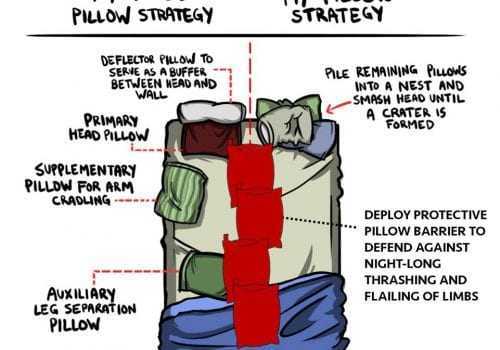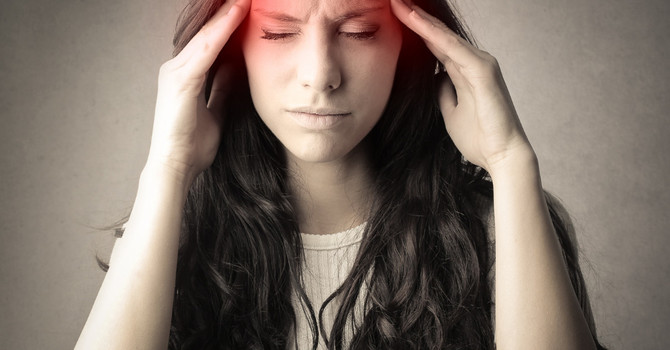
Are pillows or kids outnumbering you in your bed? We have a “healthy” mix of both in our house and each member of the family has different sleep preferences. So how is your sleep and why is it important?
Oxygen, water, food, sleep. These are the four requirements for life. Without them (in varying lengths of time) people die. Sleep is an important factor as it heavily influences our performance at work, our risk for chronic disease, and our overall quality of life. Sleep researchers, however, aren’t clear on the exact reason why humans even need to sleep. From an evolutionary perspective sleep would certainly have left primitive humans vulnerable to attack so it must offer some great advantage. Generally speaking, sleep is thought to allow our brains and our bodies to heal and repair from the damage of the day; synaptic plasticity is managed, brain pathways that are not being used are pruned, muscles are repaired, and energy stores are replenished.
America is Tired
Short sleep duration (defined as less than 7 hours of sleep per night) is common. In the United States 24% – 48% of people report it. If you are obese, a smoker, consume excessive alcohol, or are physically inactive you are more likely to report short sleep duration.1 Sleep is an active process. In other words, you don’t fall asleep simply because your brain is tired. Sleep is actively maintained throughout the night. Disruption of this careful balance between arousal and sleep results in, what else, disrupted sleep.
Stages of Sleep
Sleep is divided into two forms – non-REM and REM. Non-REM sleep is further subdivided into 4 stages, each with its own properties. During non-REM sleep neuronal activity is low, metabolic rate and brain temperature are at their lowest, heart rate decreases, blood pressure lowers, and muscle tone and reflexes are intact. Contrast this with REM (rapid eye movement) sleep where brain activity is similar to that of the awake brain. For this reason, it is sometimes referred to as paradoxical sleep. In REM sleep brain temperature and metabolic rate rise and there is complete loss of muscle tone with the exception of the diaphragm (so you can breathe), the eye muscles, and some muscles within the inner ear.
The Adverse Effects of Blue Light
A recent study of about 1,500 Americans found that 90% of adults use an electronic device within 1 hour of bedtime at least a few times per week. Devices may be an important contributor to insomnia because of the short-wavelength-enriched light that is emitted from them. Exposure to light in the evening and the early part of the night, even at low intensity, has several sleep-disturbing effects. First it suppresses melatonin delaying the onset of sleep. It shifts the circadian clock to a later time making it harder to fall asleep at a regular hour. Finally, it increases alertness and arousal.3
In another interesting study, 12 adults were randomly assigned reading from a light-emitting eBook for 4 hours before bed or reading from a print book for 4 hours before bed for 5 consecutive evenings. They found that those reading an LE-ebook displayed decreased subjective sleepiness, decreased EEG delta/theta activity, suppressed melatonin secretion, lengthened sleep latency (increased time to fall asleep), delayed and reduced REM sleep, and impaired morning alertness.3
Why does blue light have this effect? Human eyes have rods, cones, and intrinsically photosensitive retinal ganglion cells. Rods and cones are mostly responsible for image-forming vision. Intrinsically photosensitive retinal ganglion cells are responsible for regulating circadian rhythm and other biologic functions. Retinal ganglion cells form the beginning of the retinohypothalamic tract which transmits light data from the retina to the hypothalamus to regulate circadian rhythms throughout the body. Retinal ganglion cells respond powerfully short-wavelength light like the blue-colored light emitted from most devices and LED televisions. This blue light will cause a high rate of fire from the eyes to the hypothalamus, which will change hormonal and circadian rhythms.4 Blue light also has the ability to stimulate other areas of the brain which are responsible for producing norepinephrine, a neurotransmitter that has potent arousal properties.5
With the knowledge that the blue light emitted from almost all devices and LED TVs is disruptive to the foundational pathways for sleep, it’s important to take steps to remedy this if you’re having trouble sleeping. First and foremost, do not use your device in bed. At all. In fact, you should avoid using it at least an hour before you plan to go to bed. Do not watch TV in bed either. If your symptoms are severe, avoid TV for at least an hour before you plan to retire. If you have to use a device for some reason, avoid long exposure. It is important to make sure you have your eyes checked and get the proper prescription for your eyes, if needed. Consider wearing red-colored lenses for about an hour before bed. The red-color of the lens blocks the blue light from reaching the retina. Blue-light blockers that are clear also exist. You could consider purchasing a pair of these and using them in the evening and while you’re using your device. I’ve recommended a pair from this website: www.blepeyewear.com. Dr. Melissa McCulley at McCulley Eye Optix in town is able to put the blue-light blocking lens in any set of eyewear. Their care and customer service is top notch! As devices age, they tend to emit more blue light. If possible, consider getting a newer device. Finally, many devices come with a night-shift mode. This mode shifts the hue of the screen to a warmer, redder tone. This has been studied to see if it offset the negative effects of the light from a device. Unfortunately, it did not. Melatonin levels were still reduced when using night shift mode.6
In the end, if you suffer from insomnia, reducing your device exposure is likely to have a measurable effect on your sleep. Our devices have become extensions of our lives so it may be difficult to completely eliminate exposure, however, your brain (and your boss) will thank you for the better sleep.
Pillow Recommendation
I often get asked, “what is the best pillow?”. This is a tough question because there is not a one size fits all pillow. Often there will be much trial and error. Personally for myself I use a Tri-Core Cervical pillow. This pillow works great for me because it supports my neck and is the perfect amount of firm to keep my head neutral, whether I am on my side or back. You can check out this pillow at our office.
Sleep is important and what you chose to sleep on is equally important. At Venture, we would have to review the best position for your head and body to be in when you sleep. Sleep is when you recover fro m the day and prepare for the day to come! We love helping our patients move better, feel better, and be the best version of themselves.
-Melanie Dockter, DC CACCP



